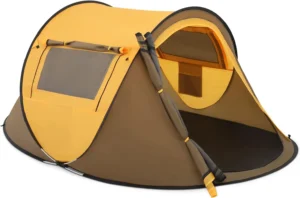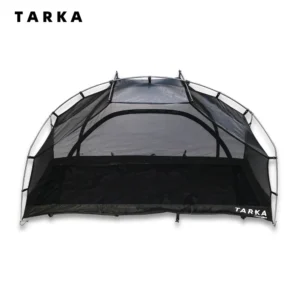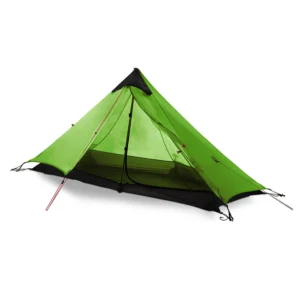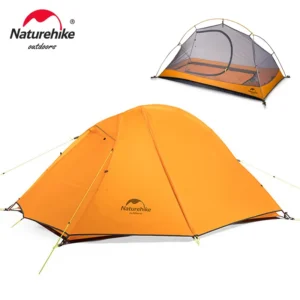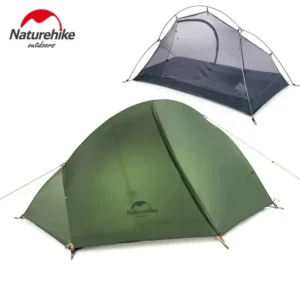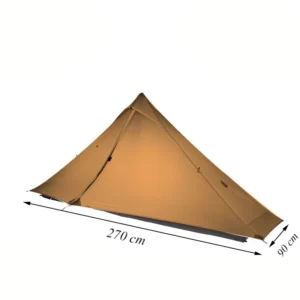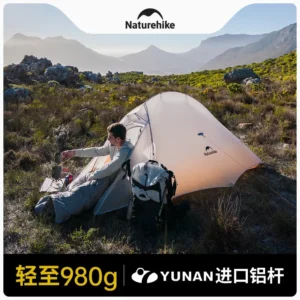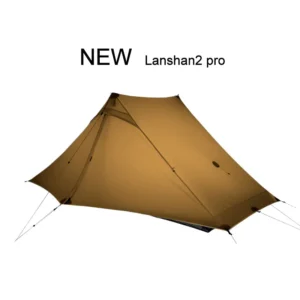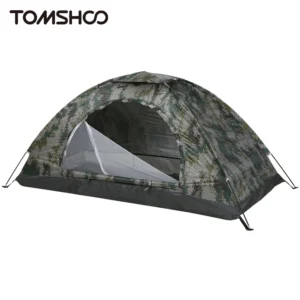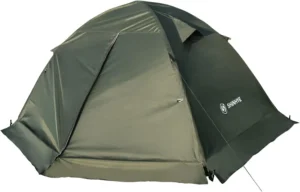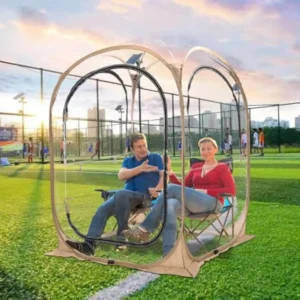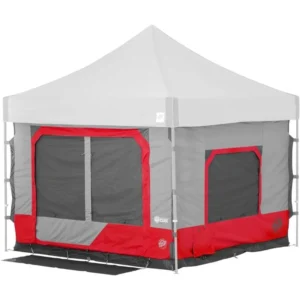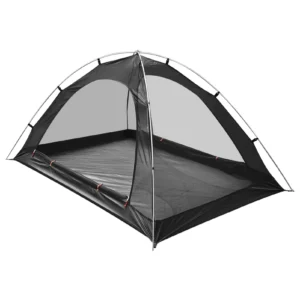Ultralight Backpacking Tent
Carry less, explore more. Our ultralight backpacking tents significantly lighten your pack for easier long trails, helping you find a durable, featherlight shelter for any adventure.
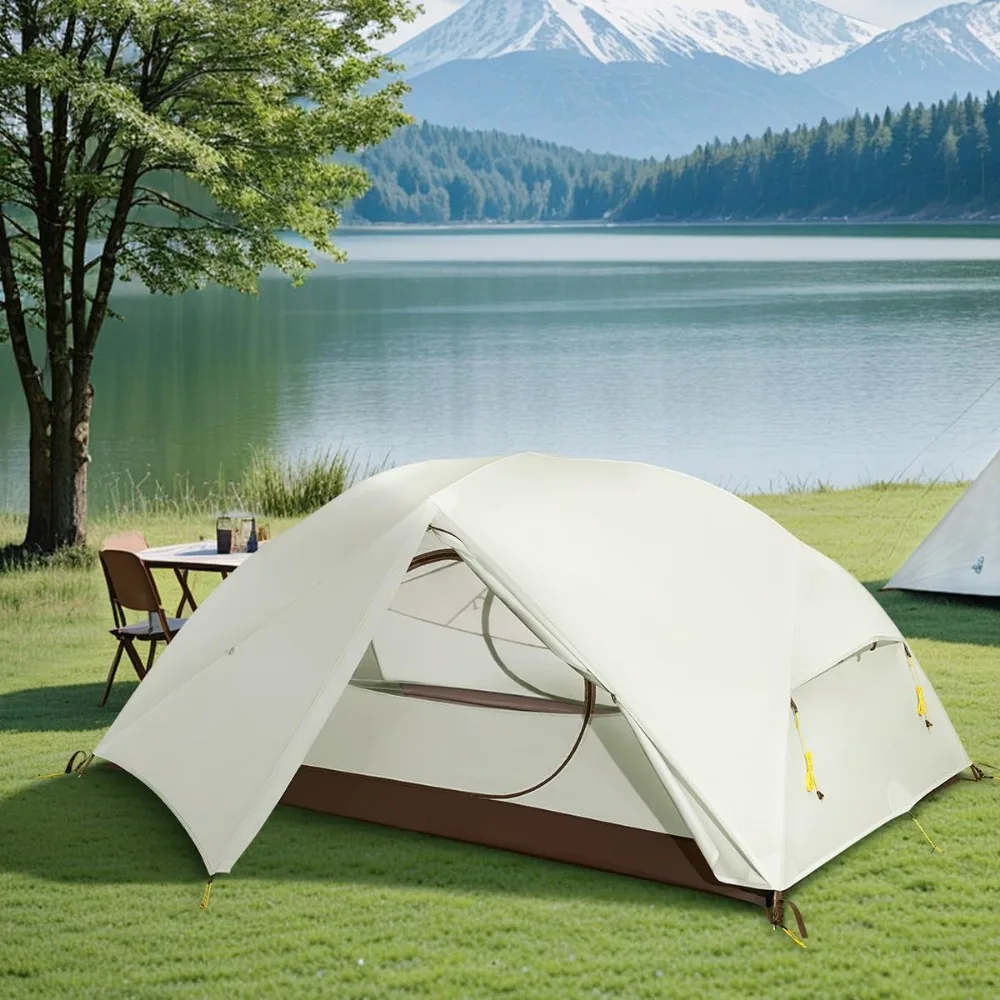
Showing 1–12 of 37 results
Lightweight Pop Up Tent, Pop Up Dome Tent, Ultralight Backpacking Tent, Waterproof Pop Up Tent
$210.64 Select options This product has multiple variants. The options may be chosen on the product pageUltralight Backpacking Tent, Ultralight Trekking Pole Tent
Price range: $350.87 through $351.98 Select options This product has multiple variants. The options may be chosen on the product pageUltralight Backpacking Tent, Ultralight Trekking Pole Tent, Winter Camping Tent
Price range: $468.86 through $537.88 Select options This product has multiple variants. The options may be chosen on the product pageHeavy Duty 4 Season Tent, Ultralight Backpacking Tent, Ultralight Trekking Pole Tent
$267.44 Select options This product has multiple variants. The options may be chosen on the product pageLightweight Backpacking Tent, Ultralight Backpacking Tent, Ultralight Trekking Pole Tent
Price range: $462.40 through $587.15 Select options This product has multiple variants. The options may be chosen on the product pageLightweight Backpacking Tent, Trekking Pole Backpacking Tent, Ultralight Backpacking Tent, Ultralight Trekking Pole Tent
Price range: $471.85 through $478.11 Select options This product has multiple variants. The options may be chosen on the product pageLightweight Backpacking Tent, Trekking Pole Backpacking Tent, Ultralight Backpacking Tent, Winter Camping Tent
$1,353.20 Select options This product has multiple variants. The options may be chosen on the product pageLightweight Backpacking Tent, Ultralight Backpacking Tent, Waterproof Backpacking Tent
$391.05 Select options This product has multiple variants. The options may be chosen on the product pageLightweight Backpacking Tent, Trekking Pole Backpacking Tent, Ultralight Backpacking Tent, Ultralight Trekking Pole Tent
Price range: $1,129.41 through $1,176.33 Select options This product has multiple variants. The options may be chosen on the product pageLightweight Backpacking Tent, Trekking Pole Backpacking Tent, Ultralight Backpacking Tent
Price range: $70.08 through $127.36 Select options This product has multiple variants. The options may be chosen on the product pageHeavy Duty 4 Season Tent, Lightweight Backpacking Tent, Trekking Pole Backpacking Tent, Ultralight Backpacking Tent
$748.00 Select options This product has multiple variants. The options may be chosen on the product page
Showing 1–12 of 37 results
Ultralight Backpacking Tents Explained: The Complete Guide
What Makes a Tent “Ultralight”?
Ultralight backpacking tents represent the pinnacle of weight-conscious design in outdoor shelter technology. These specialized tents typically weigh under 2-3 pounds, with solo models often coming in under 2 pounds and 2-person options under 3 pounds. Unlike standard backpacking tents that might weigh 4-6 pounds, ultralight designs ruthlessly eliminate excess weight while maintaining core functionality.
What sets these shelters apart is their focus on the optimal weight-to-functionality ratio. This philosophy guides every design decision, from material selection to structural components:
- Advanced fabrics like Dyneema, silnylon, and silpoly that offer strength at minimal weight
- Minimalist pole structures that maintain stability with less material
- Strategic reduction of features that aren’t essential for shelter and protection
- Innovative tensioning systems that maximize space with minimal hardware
The revolutionary materials science behind these tents allows manufacturers to create shelters that would have been impossible just a decade ago, providing reliable protection at weights that transform the backpacking experience.
Why Choose an Ultralight Tent?
The primary advantage of ultralight tents becomes apparent with every step on the trail. Reducing pack weight from a traditional 5-pound tent to a 2-pound ultralight model means carrying 3 fewer pounds across every mile. Over a 15-mile day, that’s essentially removing 45 pounds of cumulative strain from your body.
This weight reduction delivers several tangible benefits:
Reduced fatigue – With less weight on your back, you’ll experience significantly less muscle fatigue and joint stress, especially on challenging terrain or during multi-day trips.
Increased hiking range – Many ultralight backpackers report being able to comfortably hike 20-30% further per day compared to carrying traditional gear loads.
Enhanced enjoyment – When you’re less burdened by heavy gear, you can more fully engage with your surroundings and the experience of being outdoors.
Greater versatility – A lighter pack enables more spontaneous side trips, peak ascents, or exploration without the dread of additional miles with a heavy load.
For thru-hikers covering thousands of miles, this weight reduction isn’t just about comfort—it can make the difference between completing their journey or abandoning it due to accumulated strain injuries.
Key Design Elements & Features
Innovative Support Structures
Ultralight tents achieve remarkable weight savings through creative pole configurations. Many designs use minimal poles, while others eliminate dedicated poles entirely by incorporating trekking pole support. This dual-purpose approach allows hikers to carry just one set of poles for both hiking and shelter.
Specialized Fabrics
The materials revolution has transformed ultralight tent design. Dyneema Composite Fabric (formerly Cuben Fiber) offers incredible strength-to-weight ratios but at premium prices. More accessible silnylon (silicone-impregnated nylon) and silpoly (silicone-impregnated polyester) provide excellent waterproofing with minimal weight. These fabrics often use deniers (thread thickness) as low as 7D-15D compared to 40D-70D in traditional tents.
Strategic Ventilation
Ultralight designs incorporate thoughtful airflow solutions to prevent condensation without adding weight. This includes precisely positioned mesh panels, adjustable vents, and optimized door designs that create air circulation patterns.
Minimalist Vestibules
Rather than eliminating vestibules entirely, quality ultralight tents incorporate streamlined versions that provide essential gear storage with minimal material. These spaces protect boots and packs without the bulk of traditional vestibule designs.
Types of Ultralight Shelters
Freestanding vs. Non-freestanding
Freestanding tents use pole structures that allow them to stand without stakes, offering flexibility on rocky or difficult terrain. They typically weigh slightly more than non-freestanding alternatives but provide easier setup and can be moved without reinstallation. Non-freestanding designs require staking for stability but save significant weight by eliminating pole material.
Single-wall vs. Double-wall
Single-wall constructions combine the rainfly and tent body into one layer, saving weight but potentially increasing condensation. Double-wall designs separate these layers, improving ventilation and condensation management while adding some weight. Many ultralight tents use hybrid approaches with solid walls on wind-facing sides and mesh elsewhere.
Specialized Shapes
Different geometric approaches serve various needs: pyramid designs excel in wind resistance with minimal materials; A-frames maximize interior space for their weight; semi-geodesic structures balance storm worthiness with livability. Each shape represents a different philosophy in the weight-to-functionality equation.
Choosing Your Ideal Ultralight Tent
Selecting the right ultralight tent requires honest assessment of your adventure style and needs:
- Trip duration: Weekend backpackers can often accept less durability for weight savings, while month-long expeditions might justify extra ounces for reliability
- Environmental conditions: Desert campers might prioritize ventilation and UV resistance, while alpine adventures demand wind stability and precipitation protection
- Personal comfort threshold: Consider your tolerance for condensation management, headroom restrictions, and setup complexity
- Capacity needs: Solo hikers can maximize weight savings with specialized 1-person designs, while partners might need the efficiency of a spacious ultralight 2-person tent
For example, a Pacific Crest Trail thru-hiker facing diverse conditions might choose a hybrid single/double wall tent with trekking pole support, while a weekend backpacker in humid eastern forests might prefer a fully freestanding double-wall design that manages condensation better.
Weather Protection & Durability Considerations
Despite their minimal weight, quality ultralight tents provide remarkable weather protection. Look for hydrostatic head ratings (water pressure resistance) of at least 1200mm for floors and 800mm for rainflys. The best designs achieve 2000-3000mm ratings for floors while keeping weight low.
Wind stability relies more on design than weight. Many ultralight tents outperform heavier models in high winds through low-profile shapes and strategic guyline placement. The compromise comes in fabric durability—ultralight materials (often 7-15 denier) require more careful site selection and handling than traditional 30-70 denier fabrics.
Modern ultralight fabrics incorporate impressive UV resistance, but all lightweight materials will degrade faster with extensive sun exposure compared to heavier alternatives. This makes proper care and storage essential for longevity.
Price vs. Performance: Investment Considerations
Ultralight tents generally command premium prices, reflecting their specialized materials and engineering. Entry-level options start around $200-300, mid-range models fall in the $300-500 range, and premium designs can exceed $600.
This investment delivers value through:
– Reduced physical strain over hundreds of miles
– More enjoyable hiking experiences with less fatigue
– Expanded trip possibilities that heavier gear might prevent
When evaluating cost, consider the tent’s specifics uses and your commitment level. Weekend backpackers might find an excellent balance in mid-range options, while dedicated thru-hikers often find the premium models justify their cost through superior comfort and durability over thousands of miles.
Setup & Livability: Beyond the Weight
The lightest tent isn’t always the best choice if it creates frustration or discomfort. Look for:
- Interior dimensions that match your height and sleeping style
- Sufficient peak height for comfortable changing and movement
- Vestibule space that accommodates your typical gear volume
- Door designs that allow easy entry/exit without awkward contortions
- Setup systems you can manage in challenging conditions (high winds, rain, darkness)
At Explore Elements, we’ve found the most successful ultralight designs balance minimal weight with thoughtful livability features that enhance the overall experience rather than just focusing on the scale.
Common Questions About Ultralight Tents
Are ultralight tents actually durable?
Quality ultralight tents from reputable manufacturers are remarkably durable when properly used and maintained. While the fabrics require more care than heavier alternatives, they’re engineered specifically for backcountry use. Most failures result from improper setup or site selection rather than material limitations.
Can ultralight tents handle serious storms?
Many ultralight designs excel in challenging weather when properly pitched. Their low-profile shapes and specialized geometries often outperform heavier recreational tents in wind resistance. For precipitation protection, look for waterproof backpacking tents with fully-sealed seams and appropriate hydrostatic head ratings.
How do you manage condensation in such light tents?
Condensation management requires both good design and proper technique. Look for models with adequate ventilation options, and develop habits that minimize moisture—cooking outside, drying gear before bringing it in, and selecting camp locations with natural airflow can all dramatically reduce condensation issues.

